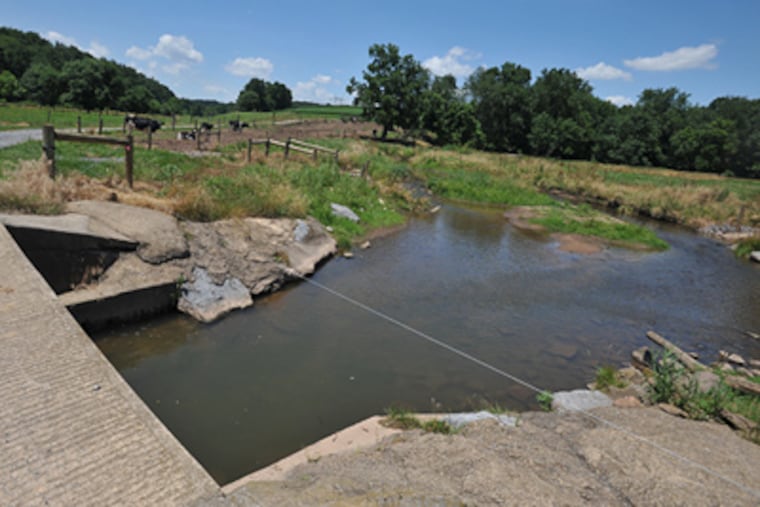Feds issue plan to clean Chesapeake Bay
The Obama administration issued a detailed blueprint yesterday for cleaning up the storied but sullied Chesapeake Bay, vowing tough oversight on pollution sources, from new housing developments to large livestock farms.

The Obama administration issued a detailed blueprint yesterday for cleaning up the storied but sullied Chesapeake Bay, vowing tough oversight on pollution sources, from new housing developments to large livestock farms.
The draft proposals, in the form of seven reports compiled by 10 federal agencies, were largely welcomed by environmental activists who have been trying for years to rescue North America's largest estuary.
The proposal calls for rigorous cleanup plans from the six states in the bay's 64,000-square-mile watershed, including Pennsylvania, and for demonstration of progress toward their goals every two years.
Failure would mean the U.S. Environmental Protection Agency could impose tougher local pollution limits, intervene in state permitting decisions, and even withhold federal funding. The reports are preliminary and do not put a price tag on the proposals, but the text makes clear that the cost would run well into the billions.
The governors of the two states that directly border the bay, Maryland and Virginia, welcomed the reports. Gov. Rendell's office referred calls to the state Department of Environmental Protection, which declined to comment, saying the reports were still under review.
That absence of comment was noted by environmental advocates, who expressed hope that all six governors would go along. Some praised the proposed consequences for states that don't meet antipollution goals.
"They're going to hold the states' feet to the fire," said Doug Siglin, federal affairs director of the nonprofit Chesapeake Bay Foundation.
In a conference call with the media, EPA administrator Lisa P. Jackson said strong action was needed after years of mostly voluntary effort, adding that some of the action would begin right away.
"We will not just be reviewing reports for the next eight months," Jackson said, vowing to take advantage of rules that she implied had been underenforced. She was joined by Interior Secretary Ken Salazar and Agriculture Secretary Tom Vilsack.
Water quality and fisheries in the bay have been degraded for decades, largely as a result of nitrogen and phosphorus that are contained in sewage and fertilizer.
Livestock farmers, a key source of those pollutants, expressed willingness to talk about the issue but were leery of the details yet to come. Revised versions of the reports are due in November, and a final comprehensive strategy is to be announced in May.
Michael Formica, chief environmental counsel for the National Pork Producers Council, expressed concern that costly antipollution measures would fall on the backs of farmers in a weak economy.
"They've got a tough road ahead of them, convincing folks who are going to be a little skeptical," Formica said of the regulators.
In one of the seven reports that focused on water quality, the EPA proposed broadening the definition of "concentrated animal feeding operations" so that more such farms would fall under state and federal oversight.
There were no specific numbers of animals, but the definition would be based in part on the size of the operation and its location with respect to impaired waterways.
Farms that meet the broader definition might have to restrict the amount of manure they apply in the fall and winter or plant cover crops to reduce runoff, the EPA proposed.
Vilsack noted that Chesapeake-area farmers already had made substantial improvements. For example, the report states that the amount of nitrogen washing into the bay from farms each year had dropped by a third since 1985, from 150 million pounds to less than 100 million.
"There's no question that farmers are stewards of our natural resources, and they are very interested in being good stewards," the agriculture secretary said.
The EPA also called for tougher action on municipal sewers in the watershed, including retrofits for areas where houses were built before existing regulations.
In addition, the EPA proposed compiling an inventory of all household septic systems in the watershed, requiring nitrogen-removal technology to be installed in all new developments and in designated "priority areas."
In the Philadelphia area, most changes would affect only the part of western Chester County that is within the Chesapeake watershed. But some coming requirements will affect everyone, including one that takes effect next summer.
As of July 1 in Pennsylvania, it will be illegal to sell or use household dishwasher detergents that contain phosphorus.